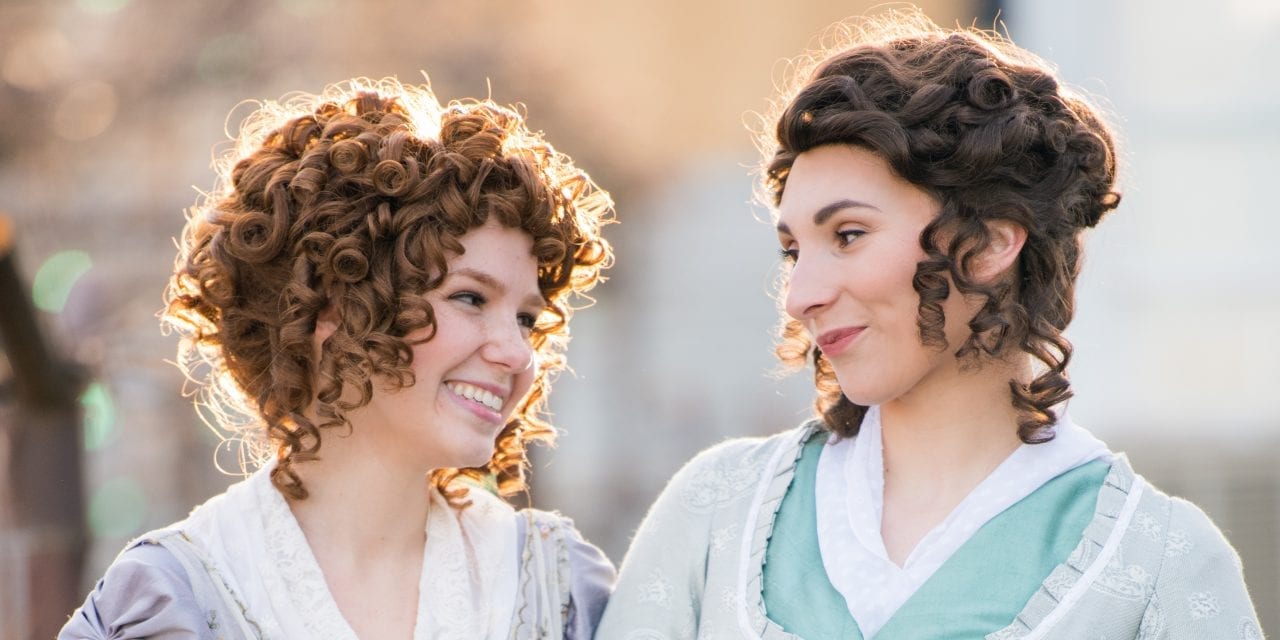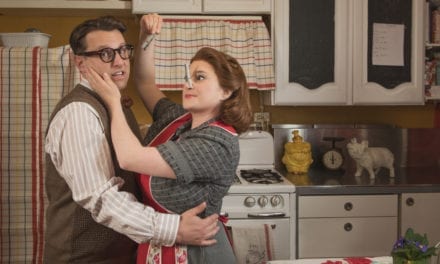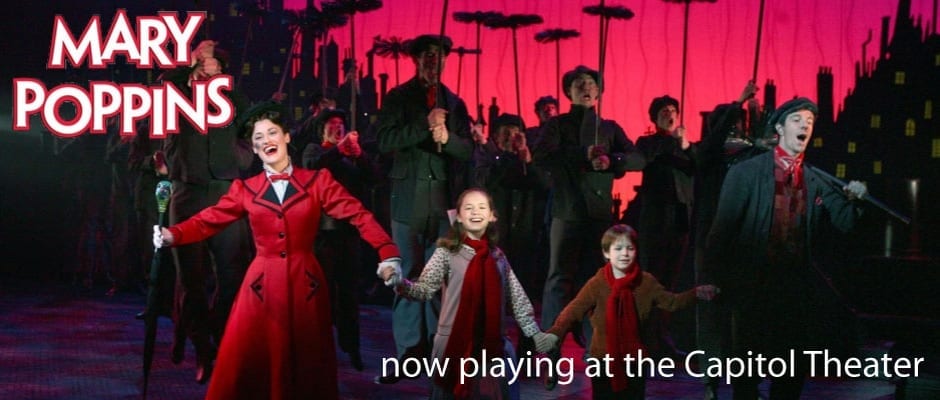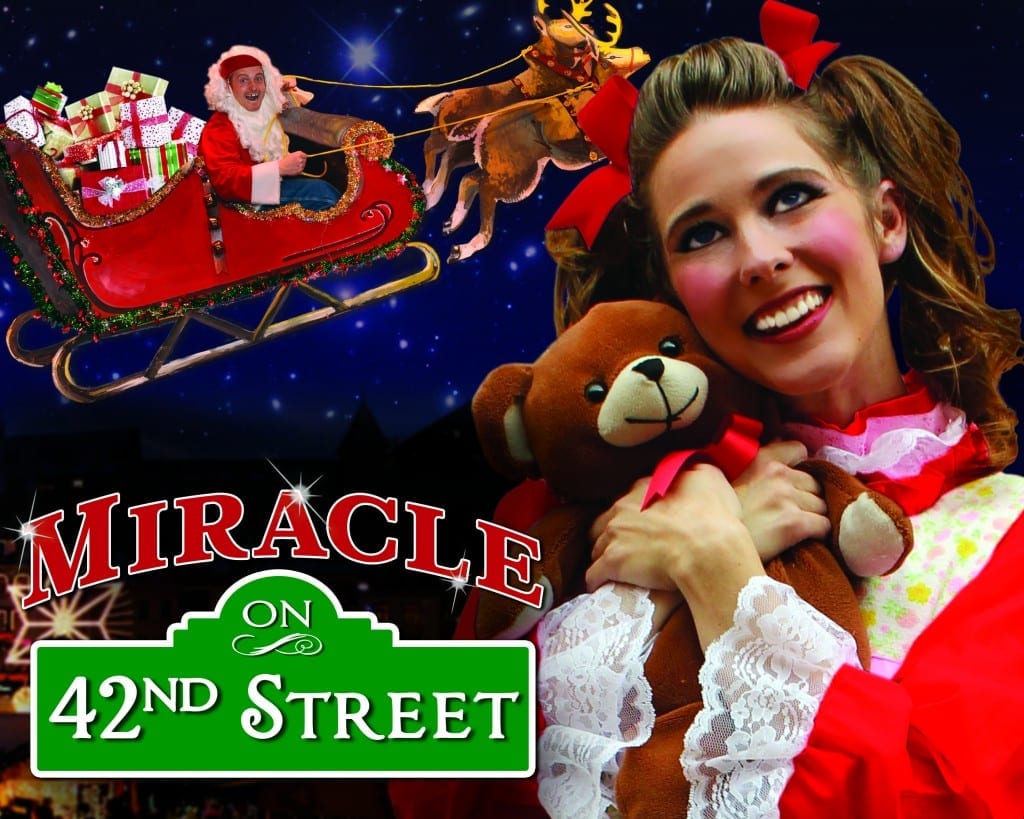OREM — What woman doesn’t want to be rescued and carried safely away by Mr. Right while lost in a cold rainy forest, fainting in despair for the loss of Mr. Wrong? That scene, as well as many beautifully directed moments of Sense and Sensibility at the Hale Center Theater Orem, is what awaits the avid Jane Austen fan. And if you’re unfamiliar with Austen, don’t hesitate. This adaptation is an extremely immersive and amusing introduction. If you don’t get a kick out of the “gossips” who come in during scene changes to humorously prattle out the story bits you may have missed, you’re sure to enjoy Lady Middleton being played by every cast member, including the men.

Show closes June 2, 2018.
Sense and Sensibility, adapted by Kate Hamill, begins with a mother and her daughters, including Elinor and Marianne, forced to leave their wealthy home and live in a cramped cottage. On the way out, Elinor and Edward fall in love, but she doesn’t know he’s engaged to Anne Steele. On a walk, Marianne is rescued by Willoughby, and they fall in love, though he is also promised to another. Both men disappear from their lives and after a trip to London, they reunite and awkwardness ensues, ending with broken hearts as Willoughby decides to marry into wealth and Edward is found to be engaged. Both sisters begin the return trip home and Elinor hides her sorrow, while Marianne is open with her wretchedness. On the way home they stay overnight near Willoughby’s estate and Marianne walks toward it on a stormy night, ending up being rescued from the cold by Colonel Brandon. She heals while falling in love with him, and Elanor finds out Edward’s engagement is broken and he loves her.

Cleveland McKay Nicoll and Malia Mackay. Photo by Suzy Oliveira.
Christopher Clark went above and beyond in the directing choices that completely included using the set as “characters.” For example, the chairs and desks were on wheels and most often an actor not in the scene would hold a chair and maneuver it to fit the sitting character’s persona. In one scene, Elanor and Fanny Dashwood are slowly pushed closer to each other to intensify the “stare down” between them. I was most amazed by the unique ways in which each actor used their rolling chair. Some scenes had chairs set in a circle with a dining chandelier lowered from the ceiling to indicate they were eating dinner, and the actors could spin, change locations at the table, and move in and focus on one another. Anne Steele moved her chair around and spun in it so quickly in stark contrast to Elanor’s calm and stillness.
The performance was greatly enhanced by the quality of acting, so even though I was so enamored with the use of the set, I couldn’t help but enjoy the poise and grace of Malia Mackay (playing Elinor Dashwood) and Bryan Dayley, the latter as the crass and loud Sir John Middleton. Marianne Dashwood was played by Marissa Scout Lanham with a believable level of strong emotions, which a lesser actor would not be able to do convincingly. I was most impressed with Rachel Bigler‘s performance where she had multiple scenes playing two characters that had to interact with each other. (In a fight scene she was pulling her own hair!) Cleveland McKay Nicoll was also excellent in his switch from the shy, awkward Edward Ferrars, to his preening brother Robert Ferrars. But most of all, I think he played Lady Middleton with a special level of earnestness.

Marissa Scout Lanham. Photo by Suzy Oliveira.
There were only ten actors in the cast, but it seemed that there were more and less at the same time. So much was going on, yet each scene felt intimate and spacious. And though the actors holding furniture or trees were dressed in the same clothing they used for their characters, it was easy to ignore them, and focus on the scene at hand. This could be due to the excellent lighting design by Cody Swenson. For example, frequently there was a yellowish light shining on a character who was the subject to gossip, but who was not really present in the scene. There was also a change in lighting when actors would switch from the present moment to remembering a past excursion and would act that out in the different lighting. The set pieces were small and simple, but very effective. The piano was shaped like a baby grand, but shrunk down so it kept the room spacious. I also greatly enjoyed the use of flowered branches and trees to show the outdoor landscape in spring. Most of these set items were held by an actor not in the scene, and maneuvered as the plot necessitated. Set designer Bobby Swenson, could not have done better
The music was a perfect Jane Austen movie feel, until it got more intense and I heard some instrumental Lady Gaga and Gotye. Meshing the two worlds was strangely satisfying, as if I were entering the world of “Jane Austen Fight Club,” and it moved the plot along gloriously. Cole McClure did the sound design and technical directing.
The only thing that bothered me was that the ending felt rushed and awkward. The main characters need to have the time and space to enjoy a final kiss closure without interruption. The kiss at the end was interrupted, and as a Jane Austen devotee, I felt exasperated. Now though this show had many effective comedic elements, it didn’t have to be subject to comedy during the classic ending. In the words of one famous Austen character, “I am most SERIOUSLY displeased.”
Despite that bothersome moment at the end, the evening was marvelous. There was such variety in the set pieces and use of acting that I might have to see it a few more times to enjoy each bit. May you and your loved ones have the pleasure of an evening at the Hale before this show is gone is my sincere wish.
Donate to Utah Theatre Bloggers Association today and help support theatre criticism in Utah. Our staff work hard to be an independent voice in our arts community. Currently, our goal is to pay our reviewers and editors. UTBA is a non-profit organization, and your donation is fully tax deductible.





